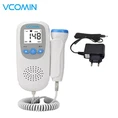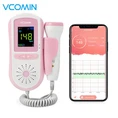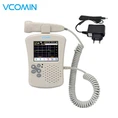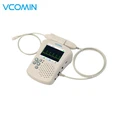Coupling agents, serving as critical media for efficient energy transfer, signal transmission, and material bonding, play an indispensable role in medical diagnostics, industrial manufacturing, and scientific research. As a specialized manufacturer with over 12 years of expertise in gel (GEL) production and products distributed in over 100 countries globally, VCOMIN deeply understands the core value of coupling agents across various industries. This article will delve into the fundamental differences and application scenarios of Class I and Class II coupling agents, assisting you in making precise choices based on actual needs.

1. Regulatory Classification and Risk Assessment
Global regulatory agencies classify medical devices, including coupling agents, based on their risk level to the end-user.
1.2 Class I Coupling Agents: Low Risk
Class I coupling agents are typically used for non-invasive procedures with an extremely low probability of causing adverse effects on patients. Their design is simple and their functions are basic. For example, the US Food and Drug Administration (FDA) subjects Class I medical devices to "General Controls," requiring standardized product labeling, establishment registration, and compliance with Good Manufacturing Practices (GMP). Manufacturers can usually bring these products to market through the relatively simplified 510(k) Premarket Notification process, focusing on demonstrating "Substantial Equivalence" to a legally marketed predicate device.
1.2 Class II Coupling Agents: Medium Risk
Class II coupling agents are often used in more complex or invasive procedures where failure could pose significant risks to the patient. In the European Union, regulation under the Medical Device Regulation (MDR) is stricter for Class II coupling agents. Manufacturers must submit comprehensive technical documentation, clinical evaluation reports, and sometimes post-market surveillance plans. The product must be assessed by a Notified Body for its safety, effectiveness, and compliance with high-quality standards, obtaining the CE mark before market entry.
2. Approval and Registration Processes
2.1 Class I Coupling Agents: Relatively Simplified Process
As mentioned, in the US, the primary pathway is via the 510(k) process to demonstrate substantial equivalence. This process focuses on basic safety and performance requirements and usually does not require large-scale clinical trials.
2.2 Class II Coupling Agents: More Complex Process
Beyond demonstrating substantial equivalence, manufacturers often need to conduct clinical studies to verify the product's effectiveness and safety. For instance, if a Class II coupling agent aims to enhance diagnostic imaging accuracy, clinical data demonstrating improved diagnostic outcomes may be required. In the EU CE marking process, the Notified Body conducts a detailed review of the manufacturer's quality management system, technical specifications, and clinical evidence to ensure the Class II coupling agent meets stringent requirements before market release.
3. Product Characteristics and Functionality
3.1 Class I Coupling Agents: Basic Functionality
Class I coupling agents are characterized by their fundamental and simple nature. In medical ultrasound, such agents (mostly gels) are primarily used to eliminate the air gap between the ultrasound probe and the patient's skin (air is a poor conductor of ultrasound). By filling the gap, they improve acoustic impedance matching. For example, research (published in Ultrasound in Medicine & Biology) shows that using standard Class I coupling gel significantly enhances ultrasound transmission, yielding clearer images during routine abdominal scans. These gels are typically non-sterile and lack additional features like antimicrobial or antiviral properties.
In industrial settings, Class I coupling agents are used for non-critical bonding and energy transfer processes. For instance, in the assembly of simple plastic components, basic Class I coupling agents can enhance adhesion between parts, ensuring fundamental connection strength without requiring advanced performance characteristics.
3.2 Class II Coupling Agents: Advanced Functionality
Class II coupling agents offer a more advanced set of functionalities. In medical contexts, they are mainly divided into two types:
Disinfecting Type: Formulated with added antimicrobial or antiviral agents. Research reports from large hospital groups indicate that using disinfecting Class II coupling gel in busy outpatient ultrasound departments can reduce cross-infection incidence by 30%. They effectively kill or inhibit common pathogens (e.g., Staphylococcus aureus, Pseudomonas aeruginosa), preventing contamination at the probe-skin interface.
Sterile Type: Essential for invasive medical procedures (e.g., ultrasound-guided biopsies or minimally invasive surgeries). Their sterility ensures no microorganisms are introduced into the patient's body during the procedure.
In industrial fields (e.g., aerospace), Class II coupling agents with specialized chemical formulations are used to enhance the interfacial bonding strength between carbon fiber reinforcements and resin matrices in composite materials. A case study from a leading aircraft manufacturer showed that using advanced Class II coupling agents increased the tensile strength of composite components by 25%, thereby improving the aircraft's overall structural integrity and fuel efficiency.
4. Practical Application Scenarios
4.1 Medical Applications
Cardiology: Class I coupling agents are commonly used for routine echocardiograms to obtain clear images of heart structure and function, aiding in diagnosing conditions like valvular heart disease. However, during invasive cardiac procedures (e.g., Transesophageal Echocardiography - TEE, requiring probe insertion into the esophagus), sterile Class II coupling agents must be used to prevent infection.
Dermatology: For non-invasive skin ultrasound assessing skin thickness or detecting subcutaneous lesions, Class I coupling gel is sufficient. But for ultrasound-guided skin biopsies, disinfecting Class II coupling agents should be prioritized to reduce wound infection risk.
4.2 Industrial Applications
Automotive Industry: Class I coupling agents are used for assembling non-structural plastic components (e.g., interior trim), meeting basic bonding needs. However, for high-strength composite components required for vehicle frames and body panels, Class II coupling agents are crucial. They improve interfacial bonding between different materials, enhancing the component's overall strength and durability.
Electronics Industry: Class II coupling agents are applied in Printed Circuit Board (PCB) manufacturing to ensure more reliable electrical connections between components by improving the adhesion of solder and conductive adhesives, which is vital for the stable operation of electronic devices.
5. How to Choose & VCOMIN Solutions
Selecting the appropriate coupling agent depends on specific application requirements:
For non-invasive, low-risk procedures or basic industrial bonding tasks, Class I coupling agents are usually sufficient.
For complex medical procedures, high-performance industrial applications, or scenarios requiring strict infection control, Class II coupling agents are the superior choice.
As a reliable manufacturer with 12 years of professional experience and products available in over 100 countries globally, VCOMIN offers a comprehensive range of high-quality gel and coupling agent products:
Standard Class I Coupling Gel: Meets requirements for routine applications.
Specialized Class II Coupling Agents: Including disinfecting and sterile types, suitable for high-demand scenarios.
We are committed to meeting your diverse needs with premium products and service. If you have any questions about our coupling agents, need assistance with selection, or wish to request samples, please feel free to contact our expert team anytime. We will provide personalized solutions and professional support to ensure you obtain the high-performance coupling agent best suited for your project requirements.




